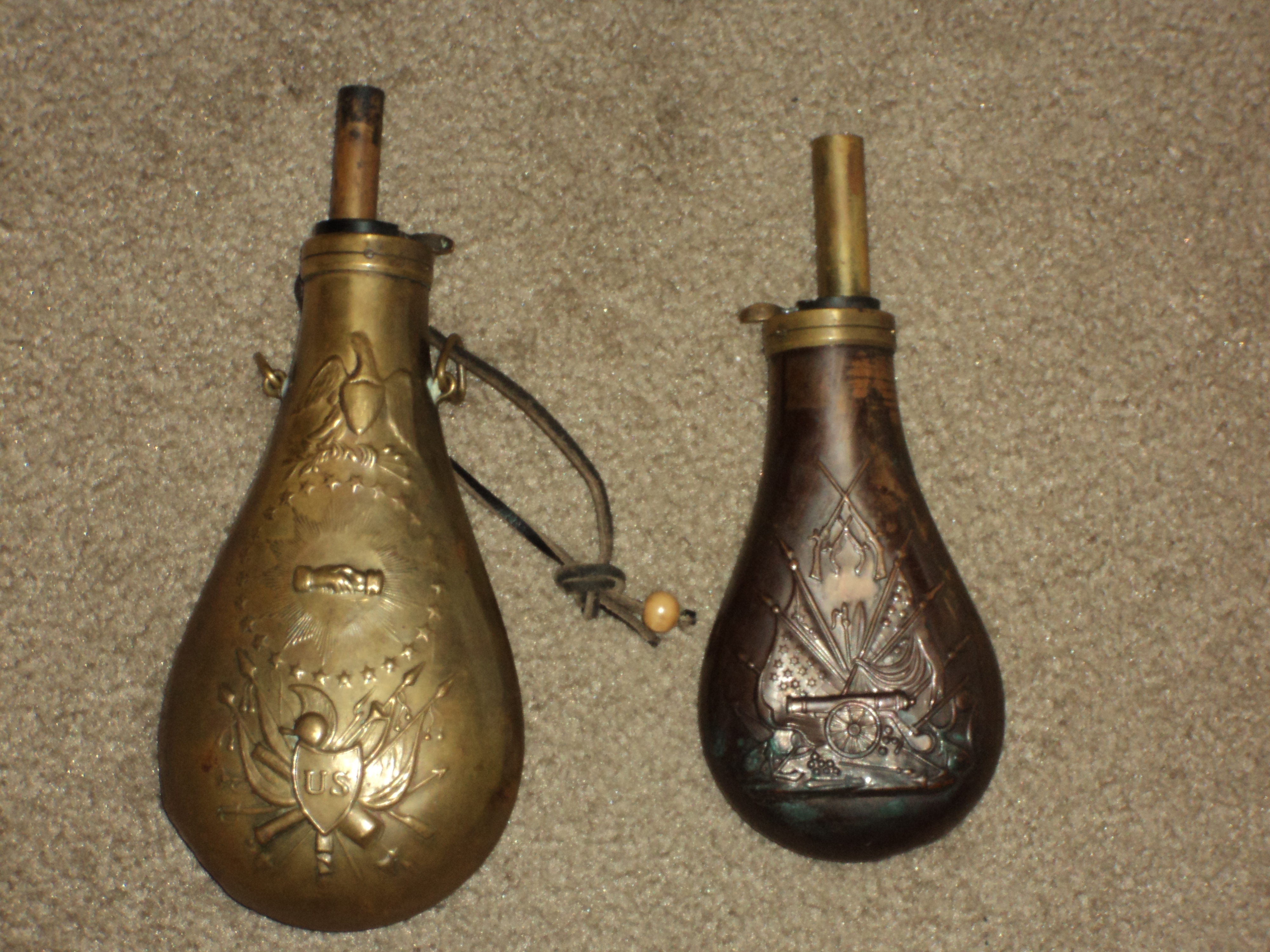Crane Senior:
Your flask appears to be what Ray Riling, the author of "THE POWDER FLASK BOOK" calls a "Shell and Brush" flask.
These flasks have some type of shell like pattern usually at the bottom with some sort of brushlike plant growing out of it.
A flask with a very similar, but not quite the same pattern to your flask's is # 336 on page 289 of the book.
The author says the pattern is characteristic of a pattern used by Capewell, a noted family who held a number of Patents on various flask features. The company also produced powder flasks but not as many as Dixon or the American Powder Flask Company.
As for the spout, "THE POWDER FLASK BOOK" does show a flask with a bent spout, it doesn't elaborate on it.











